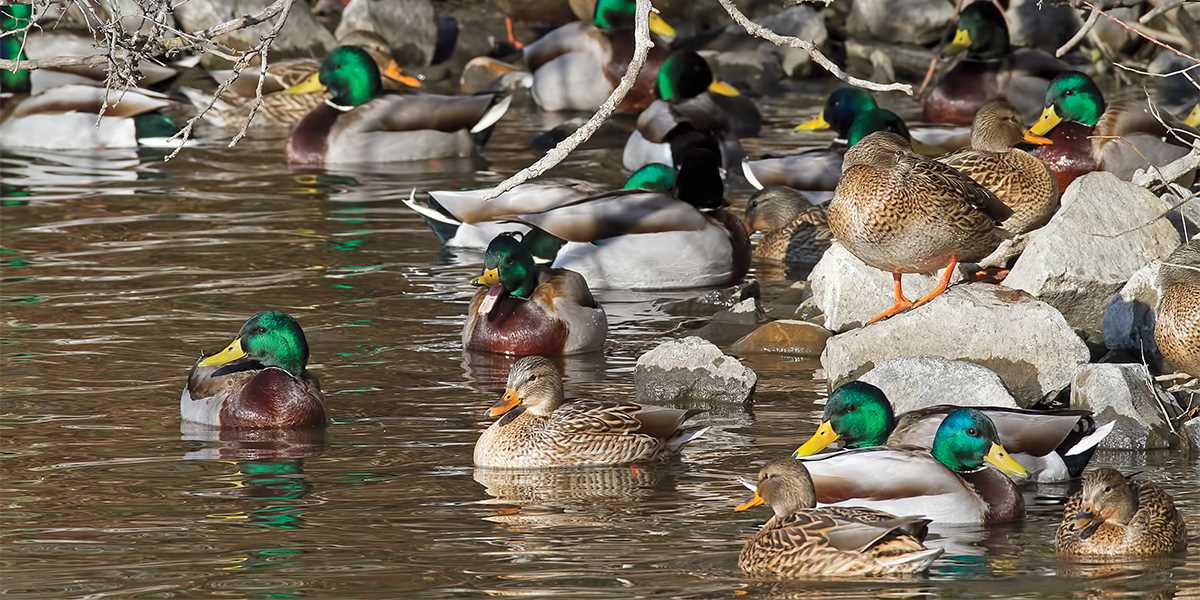Waterfowler's World: Hunting Cold-Weather Hot Spots
When the freeze is on, small creeks and streams can be the key to late-season success
When the freeze is on, small creeks and streams can be the key to late-season success

By Bill Buckley

In the waning days of the season, subzero temperatures can cause sloughs, flooded fields, and refuges to lock up, and even large rivers can become mired in shelf ice and ice floes. Under these conditions, spring-fed creeks and small streams with fast-flowing water will often remain ice free and become prime spots for ducks seeking open water. Following are some expert tips on hunting these honey holes.
Some of the best late-season waters are not only small but also remote. Earlier in the season these spots may not be attractive to ducks, but when other waters freeze over, or when ducks have been pressured in more accessible places, these tiny openings can become waterfowl magnets. While there's no substitute for in-the-field scouting, Google Maps is a phenomenal tool for ferreting out small waters that vegetation often hides at ground level.
Any stream or creek has the potential to contain at least some open water. Drake Waterfowl Elite Team member and champion caller Keith McGowan, of Smyrna, Delaware, has learned not to overlook small creeks, even if at first glance they appear to be iced over. "You can have 600 yards of frozen water, then hit a 150-foot stretch where an underwater spring raises the water temperature just enough to keep it open. Sharp bends can also increase water movement enough to prevent them from freezing up," he says.
Veteran waterfowler Hank Garvey, of Plum Island, Massachusetts, concentrates on creeks in salt marshes once cold weather starts forming ice in the marshes and bays around his home. "As the tide comes in, shifting ice will force birds off the bays and into tidal creeks. Find a bend where the current keeps water from freezing, and where wind keeps the ice out," he suggests. "That's where you'll find ducks. Typically, creeks are best hunted on a rising tide, beginning halfway between low and high tides."
Because fall storms flatten most of the marsh vegetation, Garvey hunts from either low-profile boats or layout blinds. McGowan has more cover at his disposal, preferring to build blinds against creek banks that have been carved out by high water and are sheltered by overhanging trees and bushes. You don't want to be right on the waters edge, though. Stay back far enough so ducks can't scrutinize you while they're working the decoys.
McGowan says another reason for not setting up right next to the decoys is to give your shot pattern time to open up. "I like to be 30 yards from the center of the spread, he says, not only so I'm not under a microscope but also to allow shot patterns to spread out to about 2 1/2 feet in diameter with good shot density."
For most small-water hunting you don't want lots of decoys. Because Garvey typically works small flights of black ducks and mallards, six to eight decoys work well, although placing them for maximum visibility to passing ducks is crucial.
McGowan might use only two to three decoys if he bumps small groups out of a hole. "I like to match the hatch," he says. "If the ducks are in small bunches, then a few black duck decoys and minimal calling are perfect. I'll use an occasional greeting call, but mostly some feeding and lazy-hen calls. But if I push out 100 birds, then I'll put out several dozen decoys, including floaters in the hole and some full-bodies along the ice. I'll also call a fair amount, using fewer greeting calls than feed calls and quacks."
"We stay away from spinning-wing decoys, as well as those spreads of a dozen to two dozen decoys that most hunters routinely use. To avoid a toy-soldier look, well use half hitches to wrap decoy cords along different parts of the keels; this makes decoys move more in the current. For added realism we'll also tie some cords so that the decoys look like they're swimming downstream. Remember that while open water is the main attractor here, you're also hunting educated ducks."
Ducks Unlimited uses cookies to enhance your browsing experience, optimize site functionality, analyze traffic, and deliver personalized advertising through third parties. By continuing to use this site, you agree to our use of cookies. View Privacy Policy